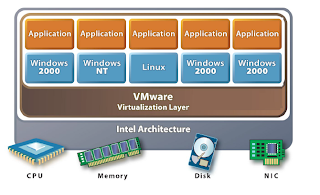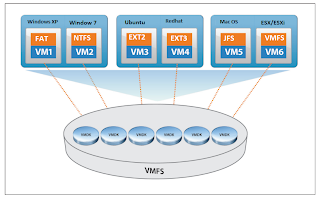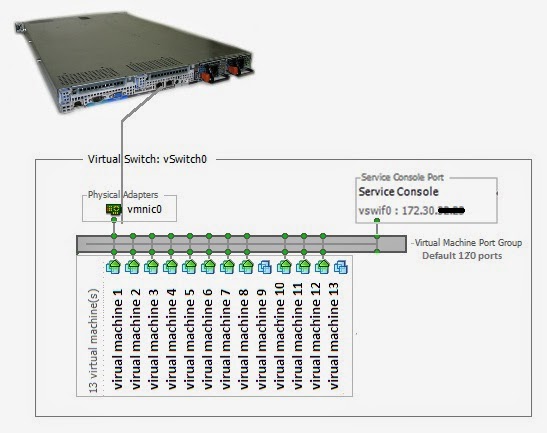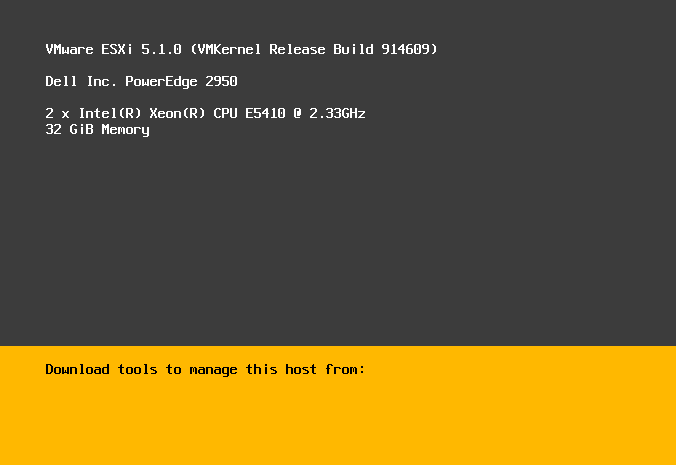VMWare ESX
ESX stand's for Elastic Sky X
Note: This doesn't appear in offical VMware material
ESX/ESXi is bare metal hypervisor running directly on the host's hardware to control the hardware and to manage guest operating systems and it's achieve near-native machine performance, reliablity and scalability with production-proven hypervisor technology that runs directly on server hardware, without the need for a host operating system.
ESXi includes a 64bit VMkernal so 32bit motherboard not support.
VMkernal handles hardware resources like CPU and memory directly using SBE (Scan before Execution) to handles special or privileged instruction.
ESXi 5.5 Update 1 (Build 1623387) is a stable version.
Maximum support of memory and CPU for individual Virtual machine.
Hypervisor Version
|
ESX/ESXi 3
|
ESX/ESXi 4
|
ESX/ESXi 5.0
|
ESX/ESXi5.1/5.5
|
VM Version
|
4
|
7
|
8
|
9/10
|
CPU
|
4
|
8
|
32
|
64
|
Memory (RAM)
|
64
|
255
|
1TB
|
1TB
|
Different between ESX and ESXi
ESX Server
|
ESXi Server
|
Linux kernal
|
VMware Kernal
|
Codebased disk footprint 2GB
|
Code base disk footprint <100 MB
|
Vmware agent running in console OS
|
VMware Agent running on VMKernal
|
Admin console and vCLI
|
Power CLI and vCLI
|
Troubleshooting service console used
|
Tech support mode is used
|
Serial Port connecting to host and VM
|
To host it not support and VM it support
|
ESX/ESXi Storage
VMFS file system is ESX/ESXi, VMFS stood for "Virtual Machine File system", VMFS is used to store virtual machine virtual hard-disk images including snapshots. VMFS increase resource utilization by providing multiple virtual machines with shared access to a consolidated pool of storage.
Three types of virtual hard-disk
.
Three types of virtual hard-disk
- Thick Provision Lazy Zeroed
- Thick Provision Eager zeroed
- Thin Provision
ESX/ESXi Network
VMkernal automatically created one virtual switch in the name vSwitch0 with 120 virtual port, by default vmnic0 is connected to physical adapter of the ESX/ESXi host.DCUI
DCUI stands for Direct Console User Interface, Using DCUI administrator interact with the host locally using text-based or menus based..






No comments:
Post a Comment